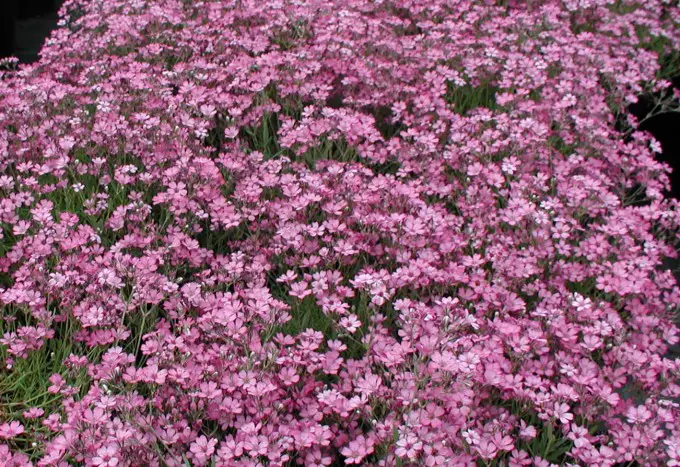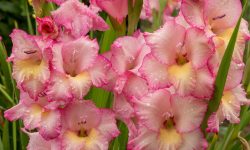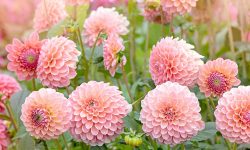Baby’s Breath, a beloved garden favorite, captivates gardeners and florists with its delicate, airy floral clusters in soft white or gentle pink hues. This charming bloom adds a light, wispy texture to bouquets, borders, and outdoor spaces. Beyond its beauty, this ornamental plant is fairly simple to cultivate and care for once you grasp its growth requirements. Understanding the correct planting methods lays the groundwork for a robust, enduring garden showcase.
Originating from Eastern Europe and Asia, Gypsophila flourishes in temperate climates with well-drained soils and full sun exposure. It comes in various species, with Gypsophila paniculata being the most common garden variety known for its dense clusters of flowers. This plant’s adaptability and delicate beauty make it a popular choice for both amateur gardeners and professional landscapers.
Selecting the Right Gypsophila Variety for Your Garden

Selecting the right Gypsophila variety is essential and should be based on your garden’s climate, soil conditions, and how you plan to use the plant. Gypsophila paniculata, the classic Baby’s Breath, is a hardy perennial that flourishes in various climates and produces abundant, airy flower clusters lasting through summer. In warmer areas, annual types like Gypsophila muralis, which have a shorter lifespan, may perform better.
It’s also important to consider the plant’s mature size. Some varieties can grow up to three feet tall and wide, making a bold statement in larger gardens. For limited spaces or containers, dwarf or compact cultivars are more suitable. Moreover, beyond the traditional white, certain Gypsophila types offer pink or richer shades, adding variety and visual interest. Choosing the appropriate variety tailored to your conditions and design preferences ensures healthier growth and easier care.
Preparing Your Garden Site for Planting Gypsophila
For Gypsophila to thrive, choosing the right planting site is crucial. It needs full sun exposure, ideally six or more hours of direct sunlight daily, to bloom abundantly. While it can tolerate some shade, this often leads to fewer flowers and stretched, weaker growth. Soil quality also plays a vital role. Gypsophila prefers well-draining sandy or loamy soils with a neutral to slightly alkaline pH. Heavy clay soils should be amended with organic matter and grit to improve drainage and prevent root rot.
Before planting, clear the site of weeds and debris. Loosen the soil 8 to 12 inches deep, incorporating compost or well-rotted manure to boost fertility while keeping the soil light and airy. Avoid excessive use of nitrogen-rich fertilizers, as they promote leafy growth over flowering, reducing the plant’s ornamental appeal. Proper site preparation helps ensure healthy roots and vigorous blooms throughout the growing season.
How to Plant Gypsophila from Seeds
Starting Gypsophila from seeds requires patience but can be rewarding and cost-effective. Begin indoors 6 to 8 weeks before the last expected frost date in your area to give the seedlings a head start. Use a light seed-starting mix and sow the seeds on the surface, pressing them lightly without covering, as they need light for germination.
Maintain consistent moisture and warmth around 65 to 70°F to encourage sprouting, which typically occurs within 10 to 20 days. Once seedlings develop a few true leaves, you can begin hardening them off. Gradually expose them to outdoor temperatures and sunlight over the course of a week when conditions are favorable.
Transplant seedlings carefully into the garden, spacing them 12 to 18 inches apart to allow airflow and room for mature growth. Water them well initially to help establish roots.
Propagating Gypsophila Using Cuttings
If you prefer faster results, propagating Gypsophila through cuttings is an effective method. Take semi-hardwood cuttings about 3 to 4 inches long during late spring or early summer. Remove lower leaves, dip the cut ends in rooting hormone to encourage root growth, and plant them in a moist, well-draining propagation medium.
Keep the cuttings in a shaded area with high humidity, misting regularly to prevent drying. Roots should develop in 3 to 4 weeks, after which the new plants can be gradually acclimated to outdoor conditions before transplanting into the garden.
This technique produces genetically identical plants, ensuring the preservation of desirable traits such as flower color and growth habit.
Watering Gypsophila: Balancing Moisture Needs
Moderate irrigation is crucial for Baby’s Breath, particularly during its early growth after transplanting. The plant thrives in growing medium that stays evenly moist without becoming saturated. Excess moisture may cause root problems and reduce the quality of bloom production. Managing hydration carefully ensures healthy root development and vibrant flowering.
Once established, Baby’s Breath shows a degree of drought tolerance due to its deep root system. During dry spells, water deeply but infrequently, allowing the top inch of soil to dry out between watering sessions. Mulching around the base helps retain soil moisture and suppress weeds but avoid piling mulch against stems to prevent rot.
Monitoring soil moisture regularly and adjusting watering according to weather conditions helps maintain healthy, vibrant plants.
Fertilizing for Robust Growth and Blooming
This plant does not require heavy feeding, but balanced nutrition helps promote vigorous growth and abundant flowers. Incorporate compost or a slow-release, balanced fertilizer into the soil at planting time to provide essential nutrients.
During the growing season, a light application of fertilizer with equal parts nitrogen, phosphorus, and potassium can boost flowering. Avoid excessive nitrogen levels, as they encourage excessive foliage growth with fewer blooms.
If the plant appears weak or slow to flower, a foliar feed of diluted liquid fertilizer can provide a quick nutrient boost. Regular feeding, combined with proper soil preparation, ensures that Gypsophila thrives throughout the season.
Pruning and Deadheading to Promote Continuous Blooms
Common Pests and Diseases Affecting Gypsophila
Aphids: Identification and Management
Aphids are small, soft-bodied insects commonly found clustered on tender new growth and flower buds. They damage plants by sucking sap, which causes leaves to curl, distort, and the plant to weaken. Infested plants often develop sticky honeydew, attracting ants and promoting sooty mold, which further harms plant health. To control aphids, a strong spray of water can physically remove them from the plant. For persistent infestations, insecticidal soaps or horticultural oils are effective and less harmful to beneficial insects. Introducing natural predators such as ladybugs or lacewings helps maintain aphid populations in balance naturally. Regular monitoring and early intervention are key to preventing widespread damage.
Powdery Mildew: Symptoms and Prevention
Powdery mildew is a fungal disease characterized by a white, powdery coating on leaves, stems, and flowers. It thrives in warm, dry climates with poor air circulation and often develops when plants are overcrowded or watered overhead. Left untreated, powdery mildew can stunt plant growth and reduce the number of blooms. Preventative measures include proper plant spacing to improve airflow and avoiding watering the foliage directly. Early application of fungicides specifically formulated for powdery mildew can control the disease effectively. Maintaining plant health with balanced nutrition and pruning also reduces susceptibility.
Spider Mites: Detection and Control
Spider mites are tiny arachnids that feed on plant sap, causing leaves to develop yellow speckling or stippling. Their presence is often indicated by fine webbing on the undersides of leaves. These pests prefer hot, dry conditions and can rapidly weaken plants if left untreated. Increasing humidity around the plants and regularly washing leaves with water helps reduce mite populations. For persistent problems, miticides or neem oil sprays can be applied safely. Introducing predatory mites or insects also supports natural pest control. Consistent monitoring is crucial since spider mites reproduce quickly.
Root Rot: Causes and Management
Root rot is a serious condition caused by waterlogged soil that deprives roots of oxygen, leading to fungal infections. Symptoms include wilting, yellowing leaves, and stunted growth despite adequate watering. Infected roots appear brown, soft, and mushy rather than healthy and firm. To prevent root rot, plant Gypsophila in well-draining soil and avoid overwatering. If root rot occurs, remove the plant from its pot or ground, trim away all affected roots, and repot in fresh, well-aerated soil. Improving drainage and watering practices ensures recovery and prevents recurrence.
Thrips: Identification and Remedies
Thrips are tiny, slender insects that feed on Gypsophila by piercing plant cells and sucking out their contents. Infested plants often show silvery or bronze streaks on leaves, distorted growth, and black specks of excrement. Thrips thrive in warm, dry conditions and can spread rapidly if not controlled. To manage thrips, regularly inspect plants for early signs of damage. Introduce natural predators like ladybugs or lacewings to keep thrips populations in check. Insecticidal soaps or neem oil sprays applied carefully to affected areas can reduce infestations without harming beneficial insects. Maintaining good garden hygiene by removing plant debris and avoiding overcrowding helps prevent thrips buildup. Early detection and consistent treatment are key to protecting Gypsophila from thrips damage and ensuring healthy, vibrant blooms.
Harvesting Gypsophila for Floral Use
Harvesting Gypsophila for floral use requires careful timing and technique to preserve its delicate beauty. The best time to harvest is when the flowers are fully open but still fresh, ensuring maximum color and longevity. Use sharp scissors or garden shears to cut stems early in the morning after the dew has dried, but before the heat of the day causes wilting. Cut stems at an angle to increase water absorption and immediately place them in clean, cool water to maintain freshness. Avoid cutting too close to the base to allow the plant to continue producing new growth. Regular harvesting encourages more blooms and keeps plants healthy. For optimal floral arrangements, select stems with abundant, well-spaced flowers and avoid those with damaged or browning blooms. Proper harvesting techniques help maintain Gypsophila’s signature airy look and extend the vase life of bouquets.
Drying and Storing Gypsophila Flowers
Preserving Gypsophila Flowers Through Drying
Properly drying Gypsophila is crucial to preserve its delicate form and gentle appearance. Start by harvesting the flowers when they are fully open yet still fresh and firm; this timing helps maintain their natural shape and vibrant color. Gather small bunches and loosely tie the stems with natural twine or rubber bands. Hang these bundles upside down in a warm, dry room with good airflow, keeping them away from direct sunlight to prevent fading. The ideal drying space has low humidity, which helps prevent mold and ensures even dehydration. Depending on your climate, this process typically takes one to two weeks.
Alternatively, you can dry Gypsophila by spreading loose flowers in a single layer on a mesh screen or drying rack. Gently turning them every few days promotes even drying and prevents clumping. For faster results, especially in humid environments, using a dehydrator on a low setting is effective and safe for the flowers, speeding up drying while preserving their delicate texture and color.
Storing Dried Gypsophila
After thorough drying, proper storage is crucial to preserve the texture, color, and fragrance of Gypsophila flowers. Store the dried blooms in airtight containers such as glass jars with tight-fitting lids or sealed plastic bags. It’s important to keep these containers in a cool, dark, and dry place to protect the flowers from moisture, heat, and light, all of which can cause discoloration, brittleness, or mold. Avoid storing near windows or humid areas like kitchens or bathrooms. Before sealing, ensure the flowers are completely dry to prevent condensation inside the container. Labeling your storage containers with the date of drying helps keep track of freshness and ensures you use the oldest stock first. When dried and stored properly, Gypsophila flowers keep their delicate beauty. They remain usable for decorations, crafts, or dried bouquets for six months to a year or more.
Using Gypsophila in the Garden and Beyond
Troubleshooting Common Growing Issues with Gypsophila
Poor Growth and Leggy Plants
Plants may become leggy and weak without enough sunlight. Preferring full sun for at least six hours daily, they develop strong stems and compact growth. Insufficient light causes stretching as the plant reaches for more sun. To improve growth, transplant to a sunnier spot or prune back leggy stems to encourage bushier growth. Ensuring well-draining soil helps avoid root stress, which can also stunt development.
Yellowing Leaves and Nutrient Deficiency
Yellow leaves often indicate nutrient imbalances or poor soil conditions. Gypsophila thrives in moderately fertile soil but may suffer if nutrients are lacking or excessive. Over-fertilizing, especially with high nitrogen fertilizers, can cause lush foliage but fewer flowers. Conduct a soil test to check nutrient levels and amend accordingly. Use a balanced, slow-release fertilizer to provide steady nutrition without overwhelming the plant.
Wilting and Root Problems
Wilting can result from underwatering or overwatering. Gypsophila prefers evenly moist soil but is sensitive to waterlogged conditions that cause root rot. Poor drainage leads to fungal infections and decayed roots, which hinder water uptake. Check the soil moisture regularly and adjust watering schedules to keep the soil moist but not soggy. If root rot is suspected, improve drainage or repot in fresh soil with better aeration.
Flower Drop and Poor Blooming
If Gypsophila produces few flowers or drops blooms prematurely, stress factors may be involved. Excessive heat, drought, or irregular watering can cause the plant to conserve energy, reducing flower production. Deadheading spent blooms encourages new flowers, so avoid letting flowers go to seed. Also, ensure the plant isn’t overcrowded, as poor air circulation increases disease risk and weakens flowering potential.
Pest Infestations
Common pests like aphids, spider mites, and thrips can affect Gypsophila health. These pests feed on plant sap, causing leaf discoloration, distortion, and reduced vigor. Early detection is vital; inspect plants regularly, especially the undersides of leaves. Natural predators, insecticidal soaps, or neem oil can control infestations. Maintaining plant health through proper watering and pruning also reduces susceptibility to pests.
FAQ About Growing Gypsophila
How often should I water Gypsophila to keep it healthy?
Gypsophila prefers moderately moist soil but does not tolerate waterlogging. Water the plant deeply once or twice a week, depending on weather and soil drainage. During hot, dry periods, increase watering frequency while ensuring the soil remains well-drained to prevent root rot.
What type of soil is best for growing Gypsophila?
Gypsophila thrives in well-draining, sandy or loamy soil with moderate fertility. Avoid heavy clay soils that retain moisture and cause root problems. Slightly alkaline to neutral pH soils, around 6.0 to 7.5, support optimal growth and blooming.
How can I encourage more blooms on my Gypsophila?
Regular deadheading, or removing spent flowers, stimulates the plant to produce new blooms. Providing full sun exposure and avoiding excessive nitrogen fertilizers also promotes abundant flowering. Pruning leggy stems encourages bushier growth and more flowers.
Can Gypsophila be grown indoors or in containers?
Yes, Gypsophila can grow well in containers with proper care. Use a pot with drainage holes and well-draining soil mix. Place it in a sunny spot that receives at least six hours of direct sunlight daily. Avoid overwatering to prevent root rot in container settings.
What are common pests and diseases affecting Gypsophila, and how can I control them?
Aphids, spider mites, and powdery mildew are common issues. Regularly inspect plants and remove affected parts early. Use insecticidal soaps or neem oil for pest control and maintain good air circulation to reduce fungal problems. Keeping plants healthy through proper watering and pruning helps prevent infestations.
Conclusion: Growing Gypsophila for Lasting Beauty and Fragrance
Strong sunlight is essential for healthy, vigorous growth. When plants receive ample light, they develop sturdy stems and a lush, compact shape. If sunlight is lacking, stretching occurs as the plant reaches out, leading to weak and leggy growth. Moving your plants to brighter locations or pruning overextended stems can revive their fullness and strength. Additionally, well-draining soil supports root health, preventing stress that hinders growth. By providing these conditions, you ensure your plants thrive beautifully and maintain their natural elegance.






